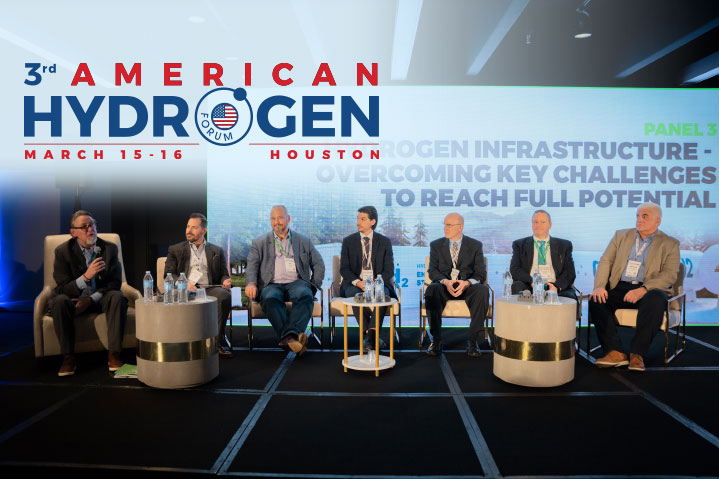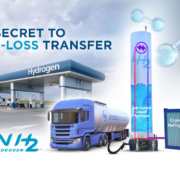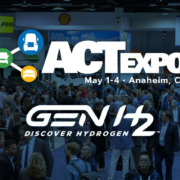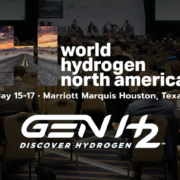Key Takeaways From 3rd American Hydrogen Forum
By: GenH2 Staff
Read Time: 3 minutes
The 3rd American Hydrogen Forum was held in Houston, TX this month at the Westin Galleria. The American Hydrogen Forum provides a platform for relevant stakeholders from the government, research, technology and service sectors to join a clean energy debate and collaborate in searching for sustainable hydrogen economy solutions. This year, the oil and gas industry showed great interest in hydrogen as a renewable fuel source. Presenters discussed existing technology conversions and how to integrate new equipment with current infrastructure. Liquefying and transporting liquid hydrogen took center stage on the second day as two major engineering companies explained their current and planned projects. It was noted that liquid hydrogen vs. gaseous is a 1 to 5 ratio for storage and distribution. Liquid Hydrogen was the key winner in both reducing transportation and storage costs.
Hydrogen was proven to be more efficient in large (long-haul) trucking – even before government subsidies and tax credits – as delivery truck batteries fueled by diesel/the grid would not have enough energy to charge large trucks. Exhibitors also displayed innovative technologies such as zero boil off liquid hydrogen tanks, reliquefying for existing limited loss storage tanks, self-sealing hoses and couplers, efficient compressors and even new ways to extract hydrogen from depleted oil wells.
It seems that hydrogen growth will soon be following the same trajectory as solar and wind growth now that government credits are higher. Previous government credits that were meant to jumpstart green hydrogen, were too low to stimulate growth. However, with the passage of the US Inflation Reduction Act’s legislation, there are now a stronger incentive to stimulate hydrogen.
As always, the most consistent message at the forum was the need infrastructure and capacity (storage) to significantly advance hydrogen adoption. To take advantage of these energy and storage capacity tax credits, there must be infrastructure that can move/transport molecules long distances. The industry is aware that these tax credits won’t last forever, therefore it’s imperative that we execute and quickly scale the infrastructure before the tax credits are reduced, or even eliminated by a future legislation.
It has become clear that now is the time to leverage hydrogen business models – as the market is rapidly advancing to meet new zero-emissions regulations. Regulations are set to begin as early as 2030 and fines will start being assessed for companies that do not meet new emissions guidelines. To help meet these environmental guidelines governments are already developing plans to stimulate infrastructure buildout. It has become clear that the hydrogen infrastructure plans can vary greatly by geography. For example, Europe plans a network style infrastructure while the United States’ plan to implement a hub strategy.
Supply chain challenges were also a prevalent topic of discussion. Specifications are already a challenge for new parts/equipment and varying regional requirements add additional complications. Complications, custom components & new equipment designs make it difficult for manufacturers to plan for production too. Manufacturers need to plan production base on bulk orders instead of on-demand. Much of the industry is still in development stage – ordering based on new designs vs long-range project planning like NASA. These challenges make it very difficult for suppliers to scale fast enough to meet the needs of the rapidly growing hydrogen industry. Yet, manufacturers remain hesitant to be the first to provide parts for custom specifications and ideally want the components to be standardized before they begin mass-production.
It is clear that the hydrogen age is nowThe Hydrogen Age is Now – and it’s only a matter of time before we have the infrastructure in place to become the most important part of a decarbonized energy system in US – and the world.











